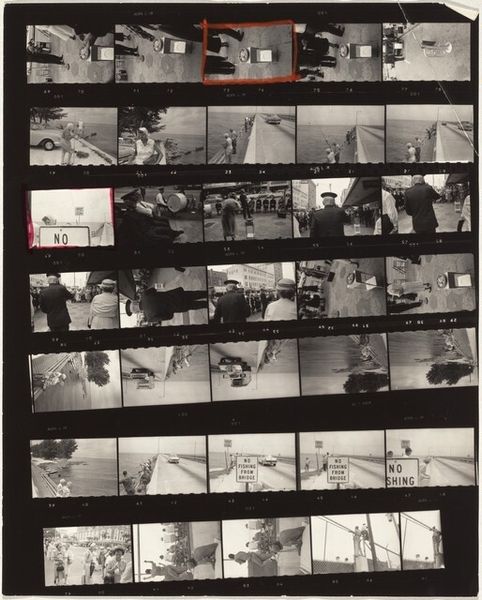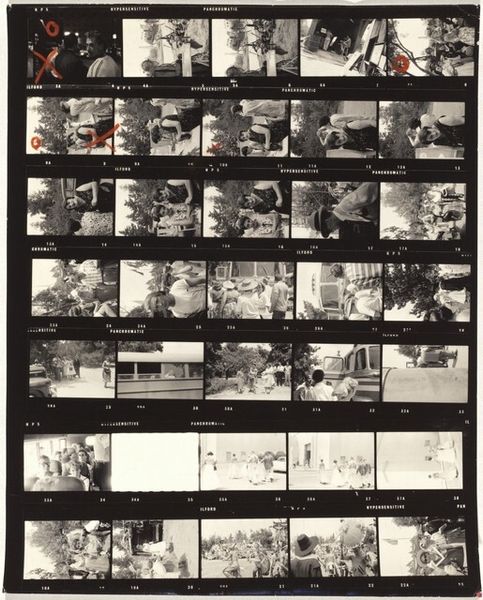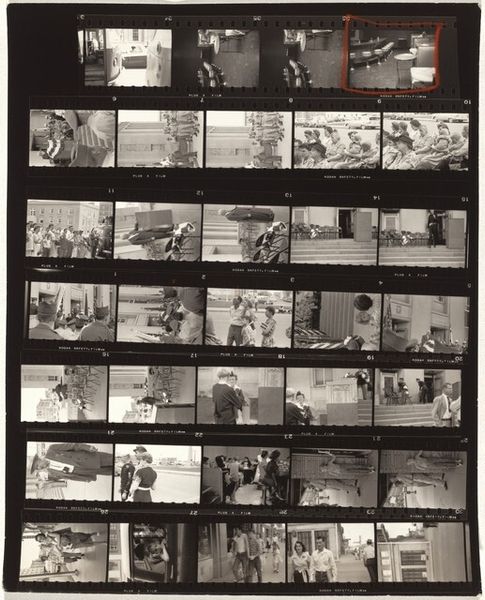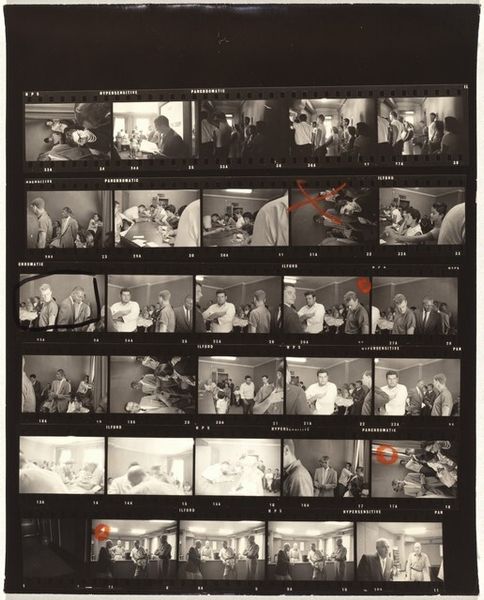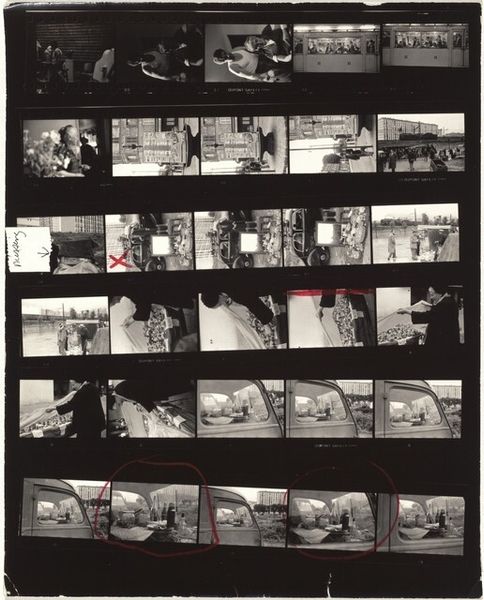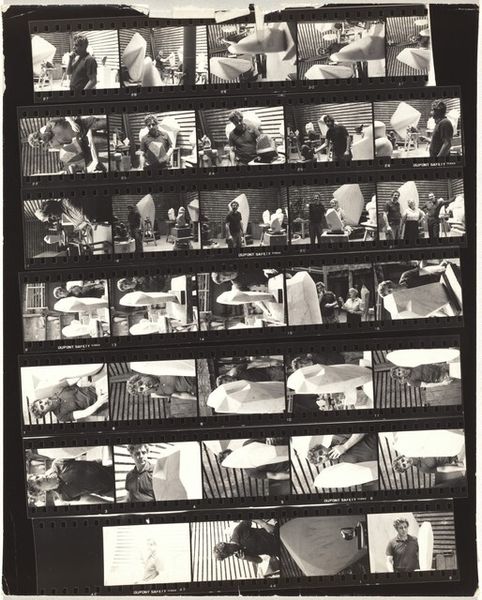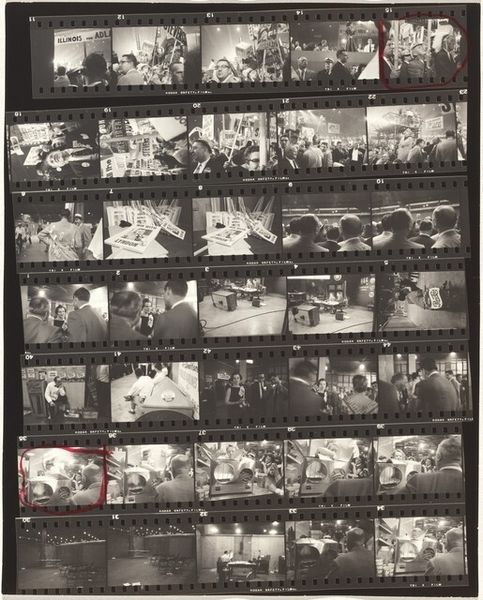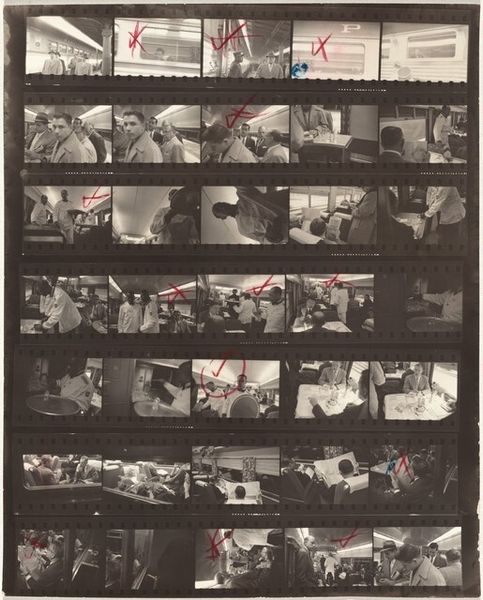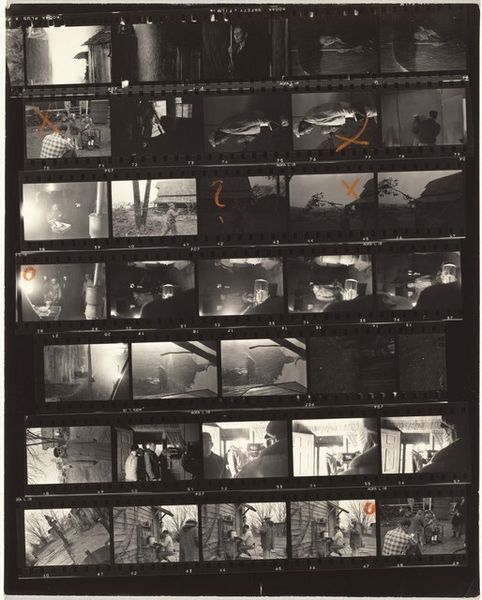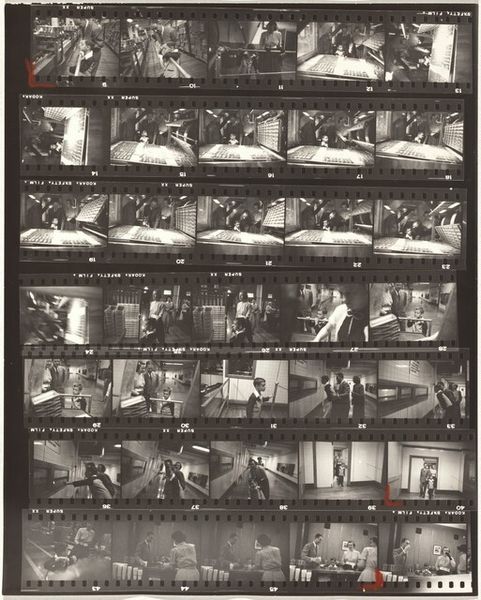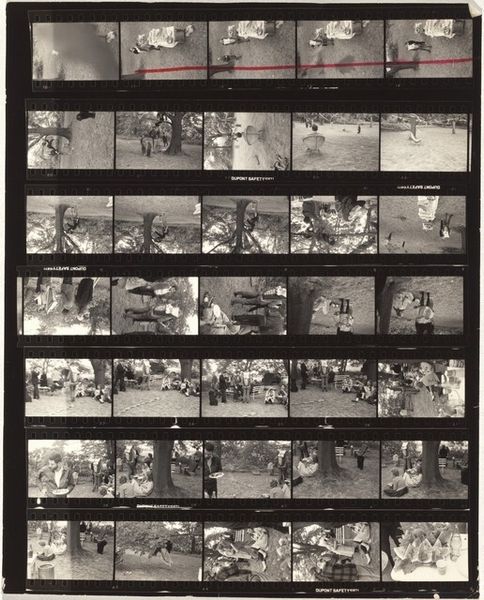
Dimensions: sheet: 20.2 x 25.3 cm (7 15/16 x 9 15/16 in.)
Copyright: National Gallery of Art: CC0 1.0
Curator: Right now, we're looking at Robert Frank's photographic work, "Family--New York City no number" from 1953, a gelatin-silver print presented as a full contact sheet. What springs to mind for you as you look at it? Editor: It feels like flipping through someone's scattered memories. The black and white lends it this raw, immediate intimacy, yet there's also a definite distance created by seeing all those different images together. Like eavesdropping on multiple private moments at once. Curator: Frank's style often captures that feeling. There’s a focus on fleeting moments and ordinary scenes, almost like he’s deliberately avoiding the posed or staged images of traditional family portraiture. This evokes an idea of "family" as a fragmented concept, reflecting his broader critiques of American life. The child figure especially calls to mind notions of vulnerability and authenticity... Editor: Definitely fragmented. The repetition, the different perspectives... the little kid sprawled out on the floor...almost childlike doodles over some images too! It's not a seamless narrative. More like glimpses. Almost hints of something. Curator: The film strip form itself is important—revealing Frank’s working process, not just the finished image. We see a blend of urban landscapes and interiors, public and private. Look closely at the composition: even the overlapping and variations carry emotional weight. Note the child, reclining seemingly unattended. It contrasts sharply with how childhood was portrayed traditionally at the time. Editor: Exactly! I love how he plays with those contrasts, pushing against the idealised notions of the '50s family life. And putting them all together really heightens this feeling. Almost like visual poetry, you know? Rhythm and rhyme. Darkroom as a form of notebook and literary form. It makes the work so much more open to interpretation, doesn’t it? It's not just seeing the photo, but experiencing a sort of photographic *thought* process. Curator: Precisely. We are not given an easy conclusion, but invited to make our own connections across place, subject and mood to arrive at a broader reading of ourselves as a culture and Frank's work's endurance in the collective unconscious. Editor: Right, it sticks with you, like a melody you can't quite place. Haunting, but in a beautiful, raw way. And each time you revisit the contact sheet, new rhymes present themselves in surprising, emotional ways.
Comments
No comments
Be the first to comment and join the conversation on the ultimate creative platform.
